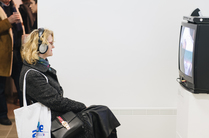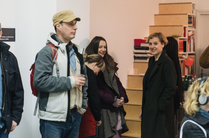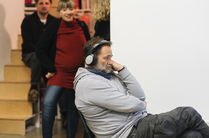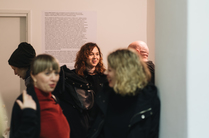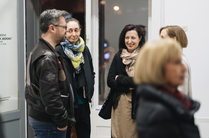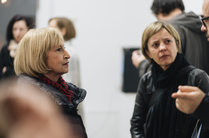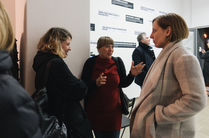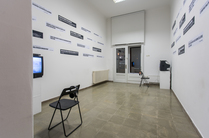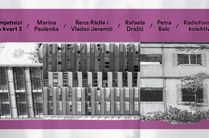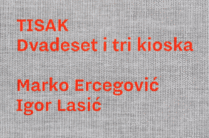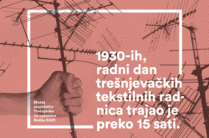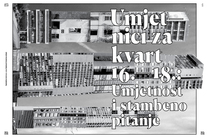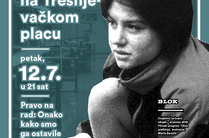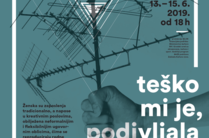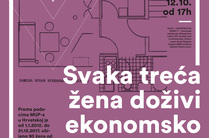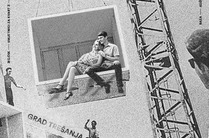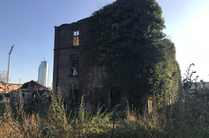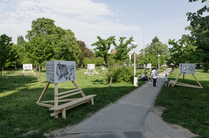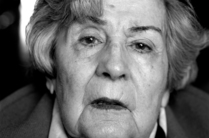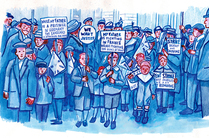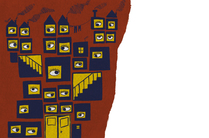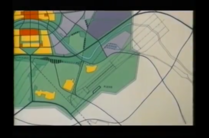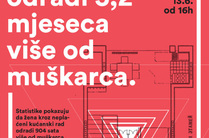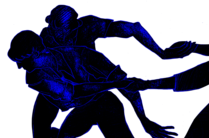MARIJAN CRTALIĆ: SISAK 2000

5 - 28 March 2019
Opening times: Tuesday to Saturday, from 4 to 8 p.m.
Exhibition opening: Tuesday, March 3, 2019 at 7 p.m.
BAZA, B. Adžije 11, Zagreb
I was born in Sisak and I have spent most of my life there. Our house is in a street on the edge between the urban and the rural part of the town. On the other side, there are fields and meadows, namely gardens in which people grow fruits, vegetables and keep domestic animals. My parents have been doing that as well, especially since they had retired. I do not intend to describe everything I have experienced there. Just, as with everyone, there were both good and bad things. This movie, unfortunately documents that other situation. The fall of year 2000. Early morning and distraught parents - someone's dogs have slaughtered all our poultry!... (Marijan Crtalić, on the video Sisak 2000)
Exhibition SISAK 2000 commences with the private collection of video recordings of Crtalić that were created between 1999 and 2001 and focuses on the recordings of Sisak and its rural surroundings, all through the prism of the artist's family.
Although the recordings have been created as a part of a wider process, a durational performance, so they are characterised by the aesthetics of a “home video” recording, from today's distance they hold an entirely different value. Foremost, documentary value with regard to the distinctiveness of the moment in which they emerged - the turn of the millennium. In the local context, on one side, it is a period of strong liberalisation and opening to European integration processes and on the other, it is the ending of the so-called transition and with it the “transformation and privatisation” process, respectively the final restitution of capitalism.
A thorough deindustrialisation of the country is in action and the beginning of the demolition of the social state and its services. The image of these transformations becomes sharper as we move from the centre to the outskirts, so the focus on Sisak, as the hometown of the artist seems appropriate. The video pieces created as “mere” recordings of the artist's daily routine are today a powerful testimony of the deterioration of Croatian small centres that are accompanied by the emotional, daily “dramas” of its inhabitants.
The selection of the videos and their display as independent works pulled out of a performance in the first person and with a time distance of almost 20 years, puts the artist in an ethnographic position. But unlike the artistic practices that have been flourishing in the 1990s – for which Hal Foster in his essay The Artist as Ethnographer? argues that they are taking over the anthropological and ethnographic methods leading to the so-called “ethnographic turn” in contemporary art - Crtalić's position is deeply engaged . Namely, this is not about an external observer of the socio-cultural context, but an artist who, through observation of his closest – not professional but private environment, offers insights into the wider social processes. The scenes of the search for 100 Croatian kunas or for the strangler of family chickens caught by the imperfect and technically rough recordings by a video camera (a medium in the 21st century so democratized as graphics was at the beginning of 20th century) invoke practices of critical realism of an interwar period.
The selection includes 3 video works: Sisak 2000 (2000), 100 kuna (2000) and Uncle (1999). Each of them presents a short episode from the life of the artist's family: the parents disputing over the loss of 100 Croatian kunas, the uncle's funeral and the slaughter of the chickens in the garden. In cooperation with the exhibition curators and designer Ivan Klisurić, the artist encloses his works with a selection of newspaper and journal headlines of that time. Resembling a background noise, this cross-section offers us some of the key data for understanding Sisak in the context of Croatia and Croatia in the context of Europe at the turn of the millennium, while short and clear formulations of newspaper clippings in the current socio-political moment receive a ghastly echo. [BLOK]
curated by: Ivana Hanaček, Ana Kutleša, Vesna Vuković – [BLOK]
designed by: Ivan Klis
The research of the daily and weekly press was conducted in cooperation with the members of the Visual arts section of the Serbian Cultural Society Prosvjeta. Supported by the Croatia State council for national minorities.
We would like to thank the head of the Gallery Vladimir Nazor Olga Majcen Linn and to the Miroslav Kraljević Gallery team for her help in the technical realisation of the project.
Exhibition Sisak 2000 is a part of the programme Artists for Neighbourhood financed by the Ministry of Culture of the Republic of Croatia. The annual programme of BAZA is supported by the Kultura Nova Foundation.

